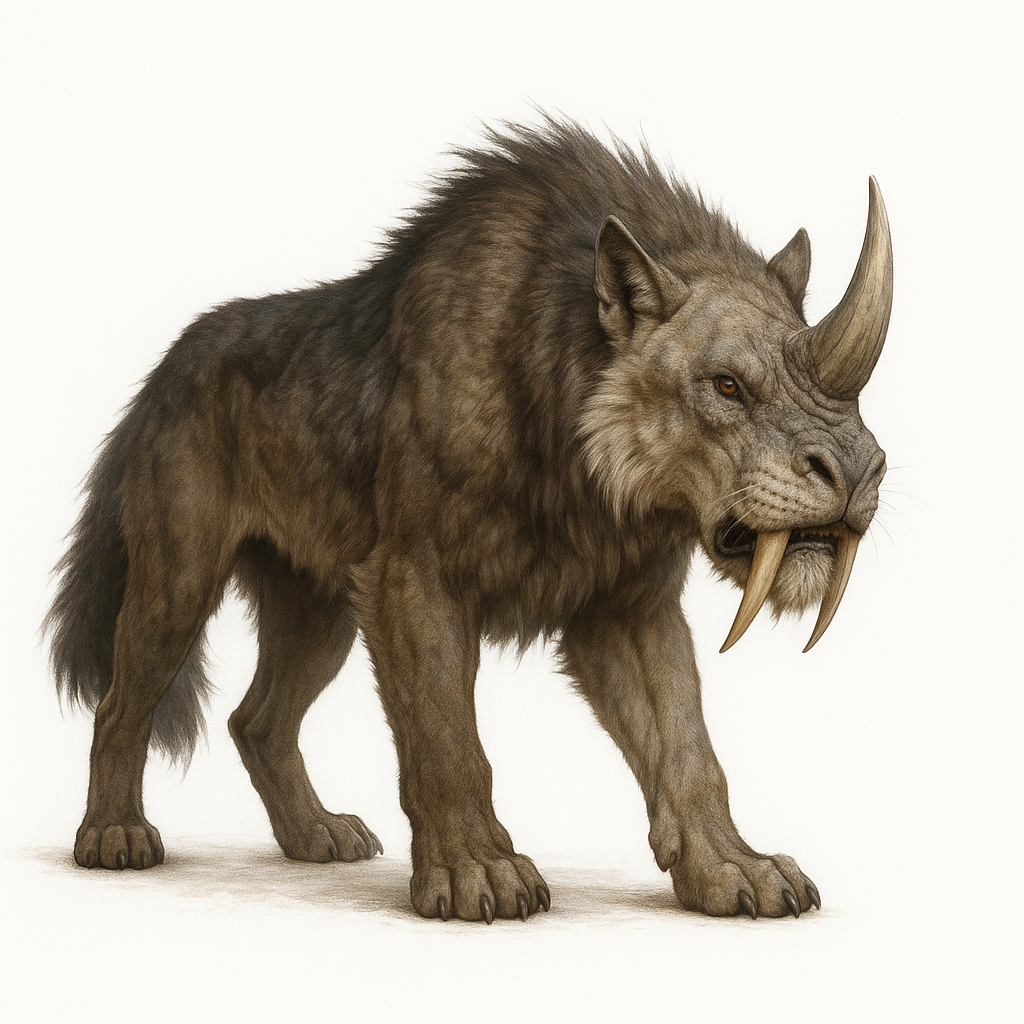Veiled Hornfang
Veiled Hornfang
Biological Classification
Domain
Eukarya (analogous)
KingdomAnimalia
PhylumChordata
ClassMammaliomorpha (non-Terran)
OrderCarnodonta
FamilyRhinosmilidae
GenusCantharhinos
SpeciesC. sabracanis
Conservation
Status
Least Concern (Stable)
Native PlanetArkael IV
HabitatRocky badlands, volcanic steppes, high-gravity scrublands
BiomeArid temperate-zone uplands
Population Size (Total)Estimated 4.2 million individuals (wild)
Morphology & Size
Length
3.2–3.6 meters
Height at Shoulder~1.6 meters
Weight700–980 kg (sexually dimorphic)
Skin/FurDense mottled fur, grey-brown with heat-dissipative underlayer
DentitionSaber-like maxillary canines; 42 teeth total
Distinctive FeaturesSingle nasal horn (keratoceramic), hypertrophied forelimbs, retractable dewclaws
Behavioral Characteristics
Diet
Hypercarnivore (85%+ animal matter)
Hunting StrategyAmbush predator; short-range charge; skeletal crushing bite
Social StructureSolitary; maternal nesting observed during breeding season
Activity PatternCrepuscular to nocturnal
Reproduction
Reproductive Type
Viviparous
Gestation Period~9.3 standard months
Litter Size1–2 cubs
Parental CareMaternal dens, 14–16 weeks nursing period
Special Adaptations
- Thermoregulatory subdermal membranes
- Regenerative epithelial response to minor injuries
- Dual-lobe heart adapted for high-oxygen environments
- Skeletal density optimized for high-gravity locomotion
- Respected apex species in local Outer Colony cultures
- Horn structure used in metallurgy for tool templating
- Displays low aggression unless threatened, or provoked




Comments